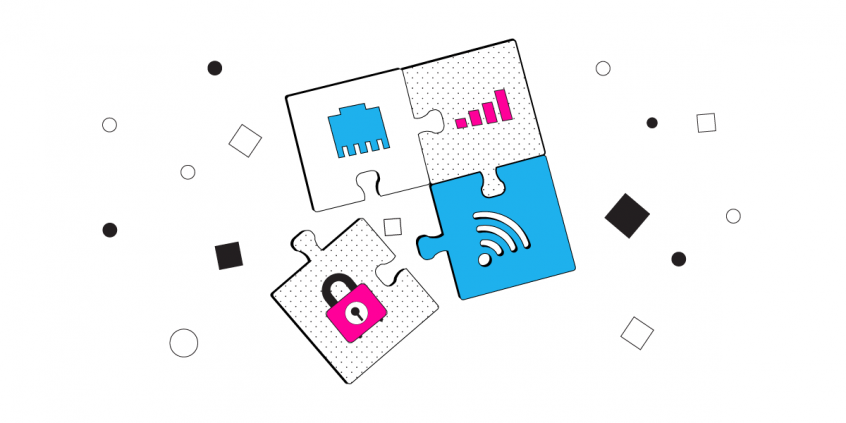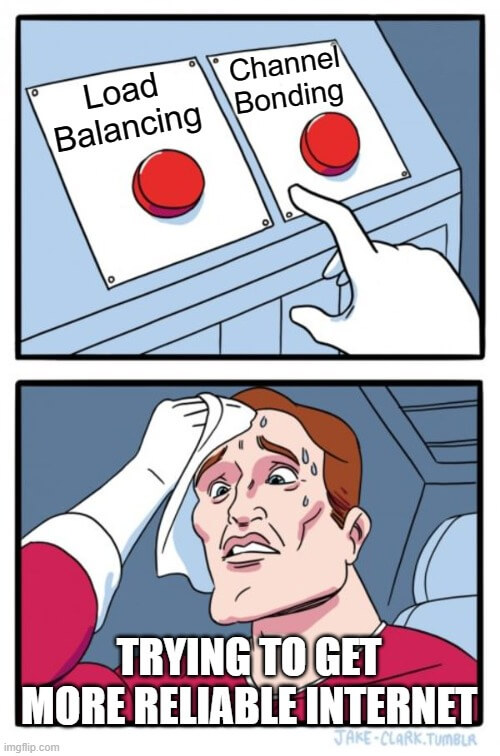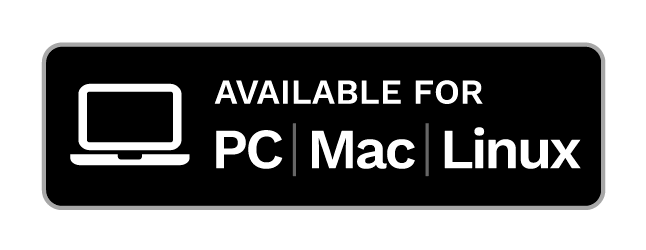Bonding vs Load Balancing Explained: Brief Guide

In This Article
Channel Bonding vs Load Balancing: How Are They Different and How Do I Choose between Them?
Among the technical jargon you encounter when looking for ways to get better Internet, you have probably stumbled upon these two terms: ‘channel bonding’ (also known as ‘broadband bonding’ or ‘link bonding’) and ‘load balancing’ (often referred to as ‘link balancing’). These techniques both use two or more Internet connections to give you faster Internet. But, because they do it differently, they produce different results.
Historically speaking, load balancing was the first of these to be used in both enterprise and home networking environments. Although channel bonding for consumers is relatively new, its functionality and ease-of-use promises a bright future.
Read below more on broadband bonding vs load balancing.

What is Load Balancing and When to Use It?
In computer networking, load balancing aims to optimize connectivity, maximize bandwidth, minimize latency, and avoid the overload of any single Internet connection. By using multiple connections with load balancing, users are able to improve reliability and availability through redundancy. Load balancing usually involves dedicated software or hardware, such as special routers or switches.
The load balancing setup for home users includes special networking hardware (routers), which are embedded with dedicated balancing software. Of course, the router has to be connected to at least 2 WAN Internet connections in order to employ its ‘balancing’ functionality.
How Load Balancing Works
When you use apps on your devices, information travels to the internet through network sockets – think of them as tubes. A load balancer works by distributing these sockets across all of the Internet connections you are currently using. In this way, load balancing prevents overloading a single connection, thereby increasing overall performance.
So, as long as your apps use lots of sockets, a load balancer does its job and you get faster Internet. General web browsing and torrenting are the most common scenarios for which load balancing should be sufficient.
However, other activities that use only a single network socket to connect to the Internet will not be optimized through load balancing. For instance, video streaming, VPN connections, and large file transfers are not sped up by a load balancer.
Broadband Bonding – What is it?

Channel bonding (also referred to as ‘broadband bonding’ and ‘link bonding’) is the process of combining two or more Internet connections into a single ‘pipe’ that has more bandwidth, lower latency and increased reliability (redundancy).
As in the case of load balancing, broadband bonding usually requires dedicated hardware, as well as software. Of course, there are also software-only solutions, which give you the same performance and flexibility but are also cost-effective when compared to the solutions that require a hardware element.
How Channel Bonding Works
As mentioned above, load balancing optimizes Internet traffic per sockets. Channel bonding, on the other hand, goes one step further and optimizes traffic into even smaller chunks of data called network packets. Following the ‘tubes’ analogy for sockets, we can think of these network packets as the ‘liquid’ that flows through those tubes.
Broadband bonding makes it possible to spread these individual packets across multiple Internet connections. By splitting all your web traffic at the packet level, even large, single-socket transfers, such as VPN connections, video streaming, and file transfers, can be given a major speed boost!
Bonding vs Load Balancing – Which to Choose?
Both channel bonding and load balancing improve your Internet connection by:
- Increasing available bandwidth
- Lowering latency
- Increasing the reliability of the connection
However, the two techniques work best in their specific scenarios.
|
Online Activity
|
Load Balancing
|
Channel Bonding
|
|
Web Browsing
|
|
|
|
Bittorrent
|
|
|
|
Download Large File
|
|
|
|
Uploads
|
|
|
|
Streaming Movie
|
|
|
|
VPN
|
|
|
Generally speaking, if you are looking for a winner for ‘bonding vs load balancing’ and, most importantly, you want to be fool-proof for the future, our recommendation is to go with channel bonding!
Speedify Fast Bonding VPN App – Much More than Regular Channel Bonding
If you’re looking for a reliable broadband bonding vs load balancing solution, you’ll definitely want to try Speedify. It is a fast bonding mobile VPN service that runs on the client devices for maximum flexibility. Speedify helps you combine:
- WiFi and 4G/LTE on your Android or iOS smartphones and tablets.
- Any connections on your PC or Mac computers: WiFi, 4G, Ethernet, DSL, Cable, etc.
This way, you’ll get more bandwidth, lower latency and failover protection while being protected by an advanced, encrypted VPN service.
Speedify Fast Bonding VPN vs Other Channel Bonding Services
Channel bonding technology is not restricted to a single implementation architecture. You can choose between a mixed hardware-software solution from companies like Peplink and Mushroom Networks or go with the software-only implementation by Speedify.
Many people choose broadband bonding solutions that include dedicated bonding hardware pieces, such as bonding routers or multi-wan (SD-WAN) networking devices. If you’re planning to adopt a hybrid hardware-software solution, here are some things you should consider.
- Performance – You will be limited by the performance of your bonding hardware and sometimes even by the software. You may have smartphones or computers that can go faster, but it won’t make any difference.
- Flexibility – Will this solution still be usable if you change something in your current setup?
- Scalability – Hardware gets old quickly. Does the solution include free upgrades for hardware?
- Cost of implementation – Hardware adds a cost to the final solution.
On the other hand, if you choose a software-only VPN bonding solution like Speedify, the advantages are clear: the only limitations you’ll have are related to the devices you’re using and the speeds of the Internet connections you’re planning to combine. There are no flexibility or scalability issues. When it comes to cost, Speedify is only a fraction the price of mixed hardware-software solutions!

Performance of Channel Bonding Solutions – Speedify Case Study
Most channel bonding solutions aren’t intelligent; they blindly pass packets over each network connection in a ’round robin’ fashion, like dealing cards in a card game. This approach is only beneficial when you have connections that are identical in performance, like two matched DSL lines.
Using the round robin channel bonding approach with connections of varying capabilities limits the maximum possible combined performance drastically. Luckily, Speedify’s smart channel bonding technology is capable of detecting the capabilities of each network connection and intelligently distributing the traffic so that you can maximize all connections up to 95% efficiency of their combined throughput.
Download Speedify
Speedify is the only app that combines your wifi, cellular, wired, and even your friend’s phone signals – into one ultra-fast and super secure link that keeps you all connected for the best possible live streaming, video calling, or just posting to your favorite app.
Subscribe to Speedify on YouTube
Get news, success stories, and our weekly livestreaming show Speedify LIVE! Tune in to chat and ask questions or to yell at us if that makes you happy. We're from Philly, we can take it.




